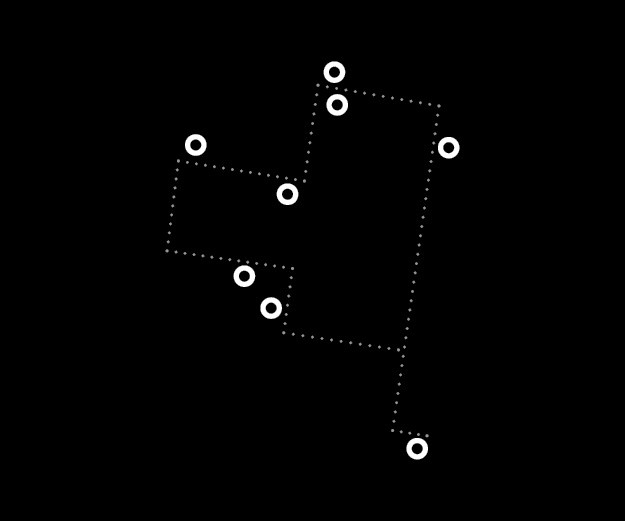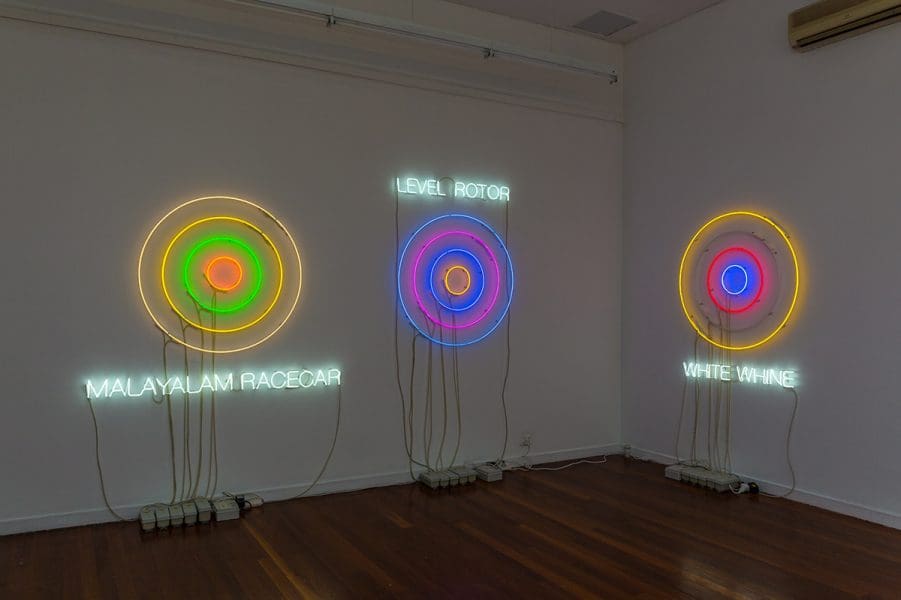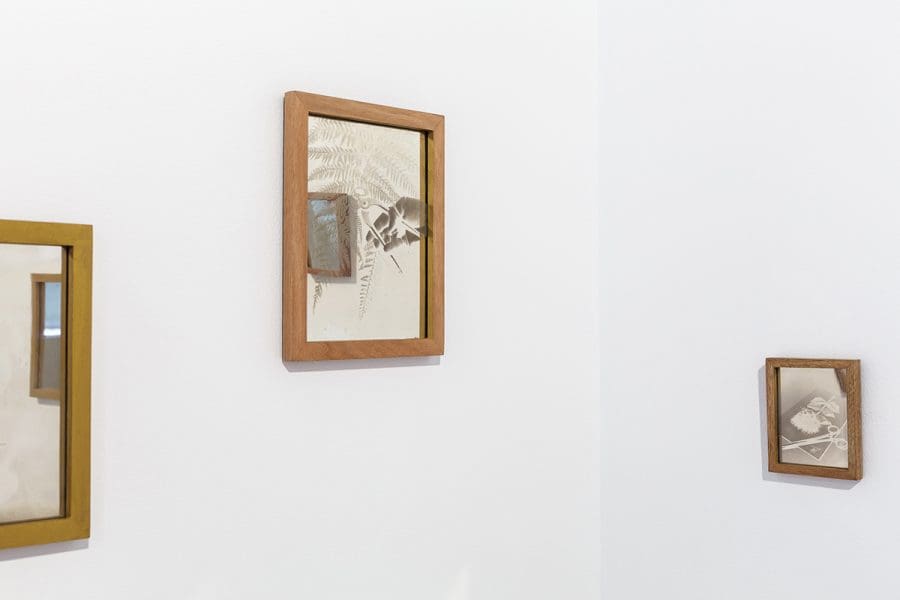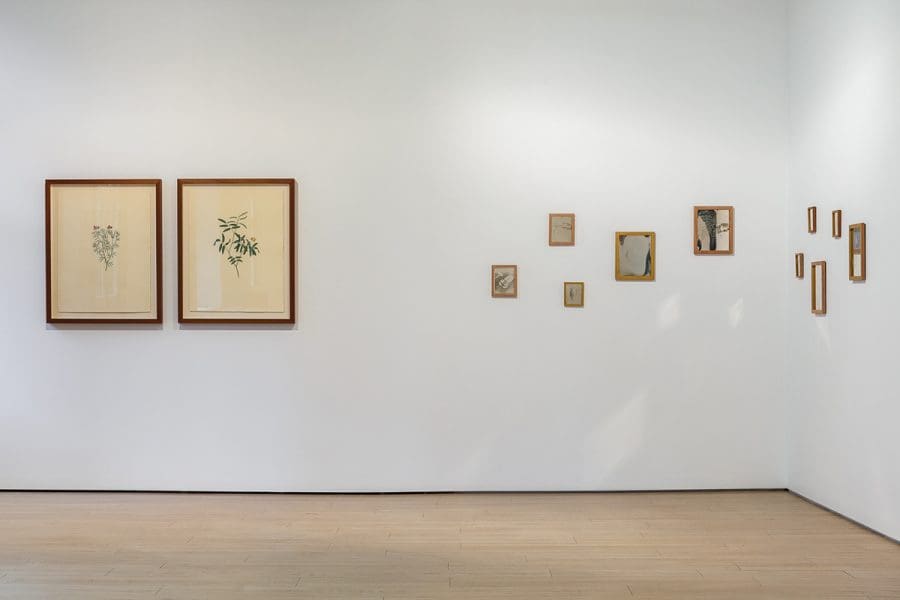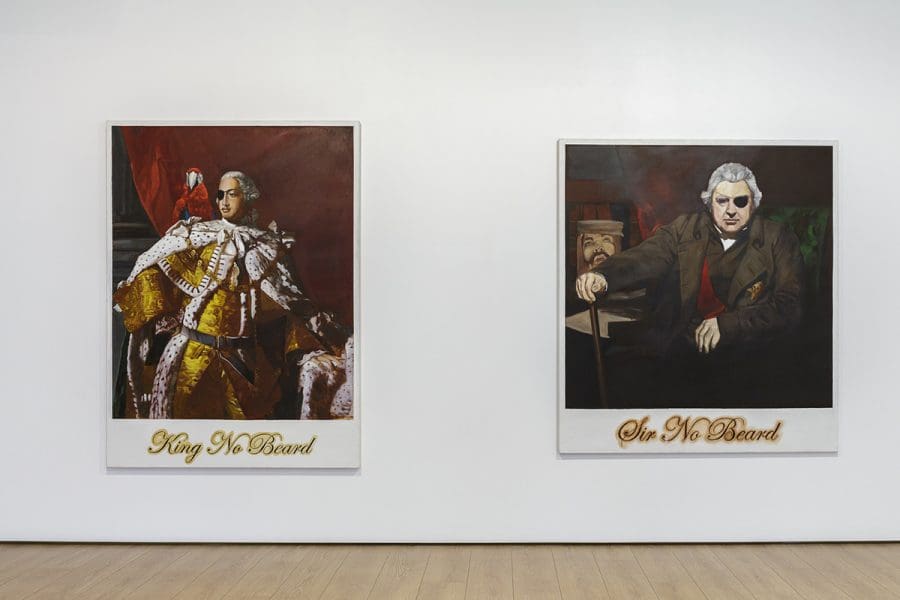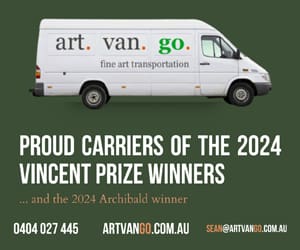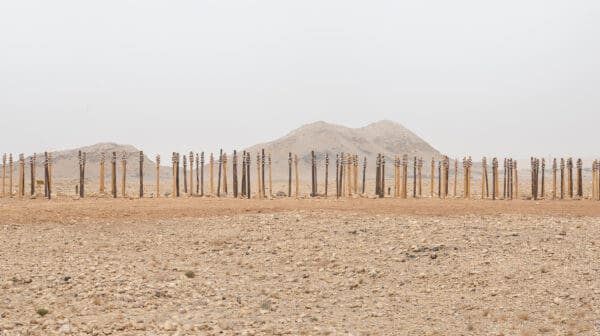Bronze trees on a pallet, neon targets, stuffed birds, and contemporary daguerreotypes all appear in Not Niwe Not Nieuw Not Neu at 4A Centre for Contemporary Asian Art. The exhibition uses the 18th century botanising of Joseph Banks as a connection point for five Australian and New Zealand artists of indigenous descent (Daniel Boyd, Newell Harry, Fiona Pardington, Michael Parekowhai, and James Tylor) who probe and critique artefacts and histories of colonisation. The show forms visual conversations between past and present, invaders and invaded, and objects both found and made. Many of these works emphasise their particular material qualities to operate in registers at once critical and poetic.
In Not Niwe Not Nieuw Not Neu, plant specimens recur as metaphors.
For example, James Tylor’s small daguerreotypes of plants refer to photographic practices such as ethnographic portraiture. These make acute connection to the Banks botanic prints Florilegium: Plate 63 and Florilegium: Plate 57 hung nearby. In Tylor’s Terra Botanica II (Agathis-australis), 2015, a hand grasping plants is also a fist ready to punch. The fine engraving of the Banks prints, allowing the viewer to see every hair on every stalk, is answered by Tylor’s equally detailed images. But the ambiguous arrangements in Tylor’s work, and the glancing, mirror-like surfaces unique to the daguerreotype photographic process, complicate the straight connection between observing and understanding that Banks and his Enlightenment era proposed.
In The Moment of Cubism & Nude Descending a Staircase, 2009, Michael Parekowhai has cast three potted lemon trees in bronze and set them adrift on a bronzed pallet; contemporary symbol of motion, industry and impermanence. The absolute fidelity to the original plants in the bronze casting (right down to bark texture and soil) is both authoritative and uncanny and is further amplified by the material weight of the work simultaneous with its floating appearance on the sea of the gallery floor. In the context of this show, and the history it references, viewers may also be reminded of some other migratory, repurposed plants, such as the breadfruit seedlings William Bligh collected in Tahiti as a cheap food source for Britain’s West Indies slaves. Parekowhai’s other works in the show (from the series Beverly Hills Gun Club, 2004) combine modernist forms with taxidermied European sparrows, a species imported into 19th century New Zealand with disastrous ecological results. These works release their ideas about belonging, otherness and aggression eloquently when embedded into the architectural fabric of the building, less so when conventionally hung.
One heart-breaking work is a pair of empty museum storage boxes Daniel Boyd retrieved from London’s Natural History Museum.
Formerly containing indigenous human remains pillaged in the name of scientific study, Decommissioned Skull Boxes has a pull that orients all the works in the show towards it. The banality of these cardboard boxes is sharply undercut by the information marked on their exteriors: skull diagrams, reference numbers, and redacting black bars that create further small voids of loss. The sense of violating hands reaching into these boxes over unknown decades is hard to avoid. In contrast, Boyd’s earlier works Sir No Beard, 2009, and King No Beard, 2008, are big, brash and polemical, a tonal shift in a room full of restrained and often coded works. Boyd’s near-parodic brushwork scathingly represents King George III and Joseph Banks as pirates, setting both the agenda and the optics for the show.
4A Centre for Contemporary Asian Art has a long history of building cultural connections between Australia and Asia. In looking closer to home, Not Niwe Not Nieuw Not Neu extends the gallery’s reach, and the smart line-up of five artists of indigenous descent and one famous dead white man spotlights some significant contemporary practices.
Not Niwe Not Nieuw Not Neu
4A Centre for Contemporary Asian Art
27 October – 10 December 2017


